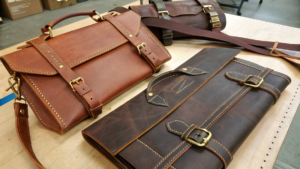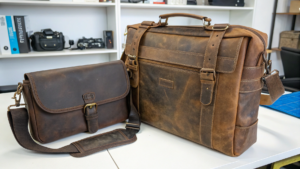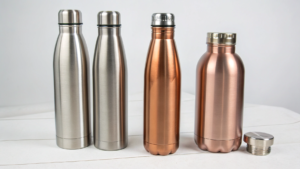Thinking About a PU Notebook for Your Brand?
Finding the right notebook for your team or customers can be hard. You want something nice. What works best?
A PU notebook is a great choice. It uses a synthetic material that looks and feels like real leather. It offers style and durability for your branding needs.

I have worked with many businesses. They all want gifts that make their brand look good. Notebooks are popular. Choosing the cover material matters a lot. Let me share more about PU and other options I see often.
What is a PU cover notebook?
Need a notebook that looks fancy but costs less? Real leather is expensive. It is not right for everyone.
A PU cover notebook uses a man-made material called polyurethane. This material is made to look and feel like real leather. It gives a notebook a premium touch without the high cost.

A PU cover notebook uses a material that mimics leather. It is a synthetic plastic coating. This coating goes onto a fabric base. Think of it like a clever imitation. The main goal is to give you the look and feel of leather. But it does this at a lower price. I have seen how PU covers add a stylish touch. You can make journals or gift boxes look amazing.
Why Use PU?
PU is popular for many reasons.
- Looks Good: It copies the texture of real leather well.
- Many Options: It comes in lots of colours and textures. You can find shiny, matte, smooth, or textured finishes. This makes it easy to match your brand colours.
- Cost: It is much cheaper than real leather. This means you can order more notebooks for your budget.
- Easy to Clean: PU is simple to wipe clean.
How is it Made?
PU is made in a factory. They put a layer of polyurethane onto a base. This base is often cotton or polyester fabric. Then they press a pattern onto the PU layer. This pattern gives it the leather look. It is a stable material. It works well for covering notebooks. It helps protect the pages inside. Choosing the right cover makes the notebook last longer.
PU vs. Real Leather
| Feature | PU Leather | Real Leather |
|---|---|---|
| Look & Feel | Can look like leather | Natural, unique texture |
| Cost | Lower | Higher |
| Durability | Good | Very Good (with care) |
| Water Resistant | More | Less |
| Breathability | Less | More |
| Appearance | Uniform | Unique markings |
| Eco-Friendly | Debateable | Needs animal source |
Real leather ages over time in a unique way. PU leather stays looking the same. For corporate gifts, PU often gives a consistent look across many items. This is good for branding.
What is a poly composition notebook used for?
Need a basic notebook for everyday writing? Something simple and strong?
A poly composition notebook1 is used for general note-taking. People use it in schools, offices, or at home. Its cover is usually a flexible plastic. This cover protects the pages from spills and rough handling.

A poly composition notebook is a very common type. The "poly" usually means polypropylene. This is a kind of plastic. The cover is often thin and bendy. The pages inside are sewn or glued together. They are not spiral bound. It opens flat which some people like. I see these used a lot in places where notebooks get a lot of use. They are built to be practical.
Common Uses
Poly composition notebooks have simple uses.
- School: Students use them for classes. They are cheap and tough.
- Office: People use them for meeting notes or daily tasks. They stack easily.
- Journals: Some people use them for simple writing or thoughts.
- Fieldwork: The plastic cover helps protect against weather or dirt.
The plastic cover is key here. Paper covers can tear or get wet easily. A poly cover stops this. It makes the notebook last longer. It is not fancy. It is made to be used every day.
Poly vs. PU Uses
Poly notebooks are workhorse items. They are for function. PU notebooks are more about look and feel. They are for impression.
| Feature | Poly Composition Notebook | PU Notebook |
|---|---|---|
| Cover Type | Flexible Plastic | Flexible or Hard PU |
| Primary Use | Everyday notes, school | Journals, gifts, premium |
| Look | Simple, functional | Stylish, like leather |
| Feel | Smooth Plastic | Soft, textured |
| Cost | Low | Higher |
| Branding | Simple prints | Deboss, foil stamp |
When I help a company choose gifts, I ask them about the purpose. Is it for internal use, like field notes? Or is it a gift for important clients? This helps decide between a simple poly or a more elegant PU notebook. Both have their place.
What are the three types of notebooks?
Trying to understand all the notebook options? It can seem confusing. Covers and bindings are different.
Notebooks come in many forms. Three main types often depend on how they are put together. These types are casebound, spiral bound, and perfect bound.

When I talk about notebook types2, I often think about how the pages are held together. This affects how the notebook feels and how long it lasts. It also changes how you can use it. Here are three common ways notebooks are made. They each serve different needs for people and for branding.
Casebound (Hardcover)
This is your classic hardcover book style. The pages are sewn or glued together into a block. This block is then glued into a stiff cover board. This board is wrapped in material like cloth, paper, or PU.
- Pro: Very durable, looks professional, lies mostly flat. Great for long-term use or premium gifts.
- Con: Can be heavier, costs more to make.
- Branding: Allows for debossing (pressing a design in), foil stamping (shiny print), or full-colour printing on the cover material. PU covers are often used for this type.
Spiral Bound (Wire-O or Coil)
The pages are punched with holes down one side. A metal wire or plastic coil is threaded through the holes.
- Pro: Lays completely flat, can fold back on itself to save space, pages turn easily. Good for taking notes at a desk or standing. Generally affordable.
- Con: Wire can get bent, pages can sometimes tear out.
- Branding: Covers are often cardstock, paperboard, or plastic. You can print full colour.
Perfect Bound (Paperback Style)
The pages are stacked and the spine edge is glued together. A cover is wrapped around the glued edge. This is like how most paperback books are made.
- Pro: Clean, professional look, lightweight, cost-effective for many pages.
- Con: Does not lie perfectly flat, spine can crack over time with heavy use.
- Branding: Full-colour printing on the cover and spine is easy. Often used for journals or notepads with many pages.
| Notebook Type | Binding Method | Typical Cover Material | Common Use | Durability | Branding Options |
|---|---|---|---|---|---|
| Casebound | Sewn or Glued block | Board + Fabric/PU/Paper | Journals, Gifts, Notes | High | Deboss, Foil, Print |
| Spiral Bound | Wire or Plastic Coil | Cardstock, Paperboard | Notes, Sketching, Lists | Medium | Full-colour Print |
| Perfect Bound | Glued spine | Cardstock | Journals, Pads, Books | Medium | Full-colour Print, Spine Print |
Knowing these types helps you pick the right one. Think about how the notebook will be used. Think about the look you want for your brand.
Conclusion
PU notebooks offer style and value. Poly notebooks are tough and practical. Different binding types change how a notebook works. Choosing the right one helps your brand.





